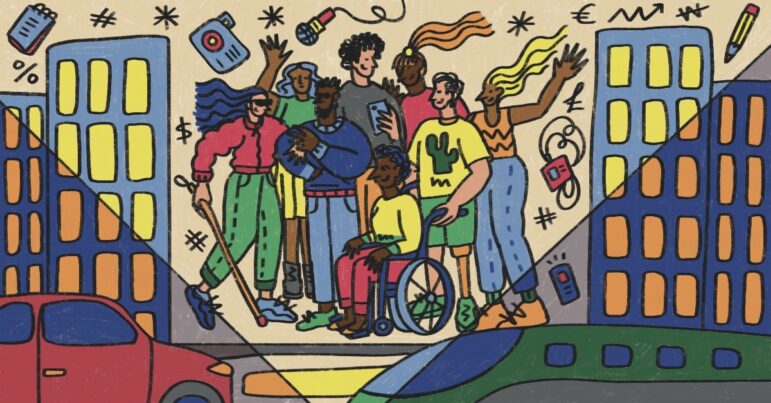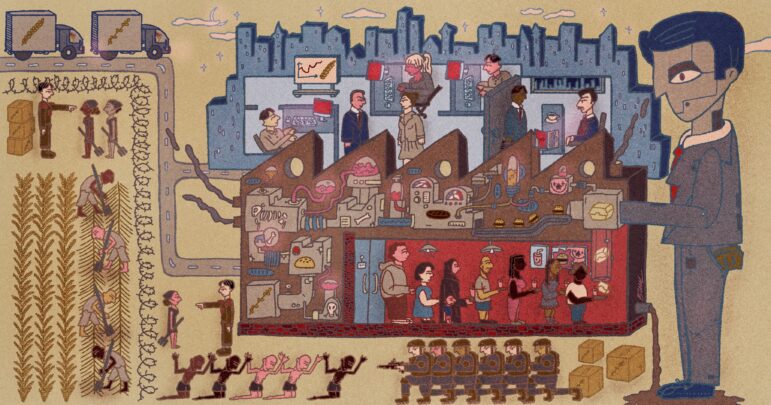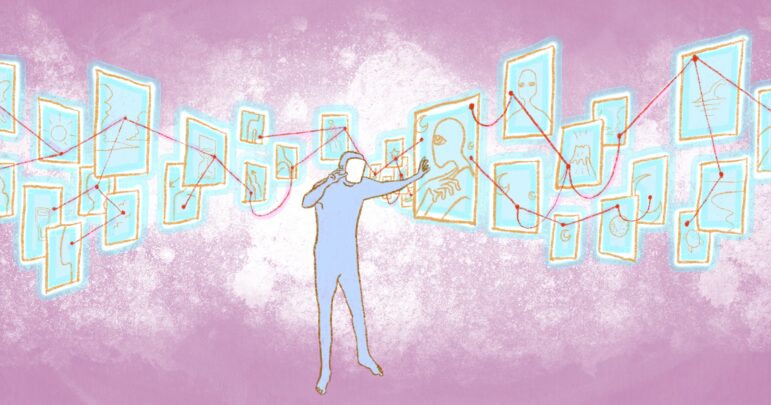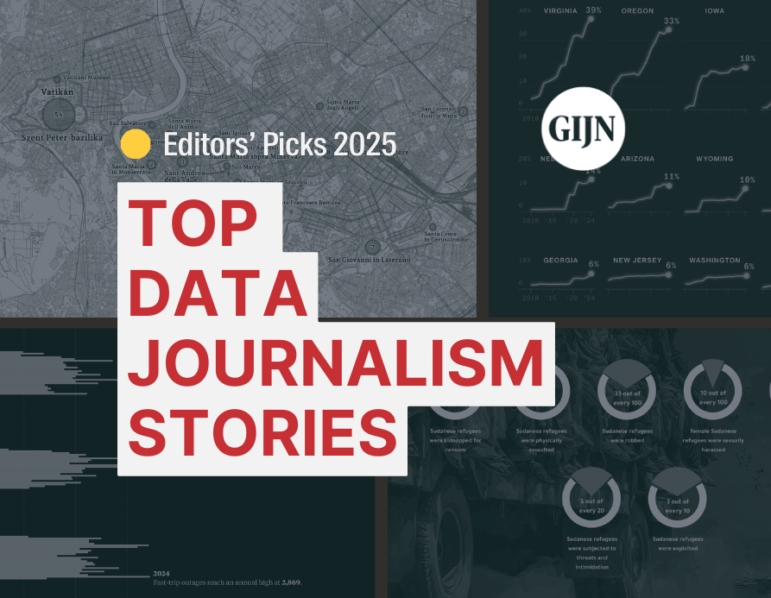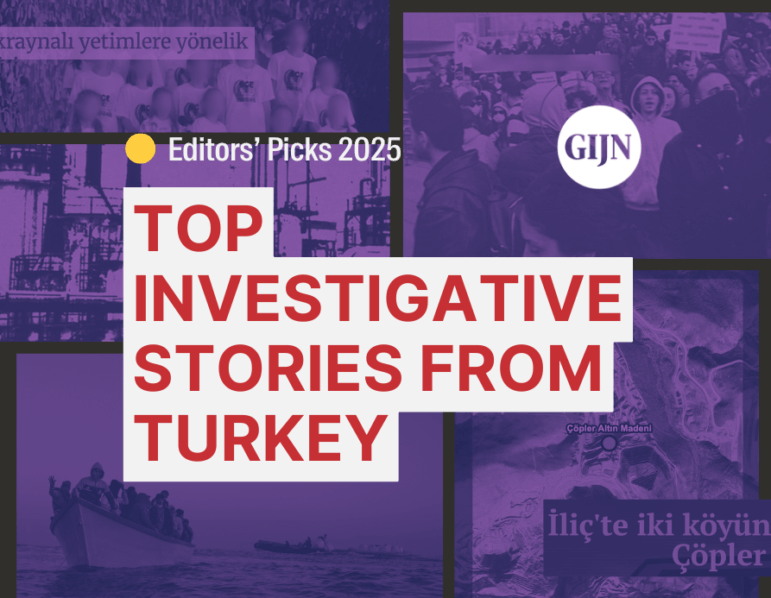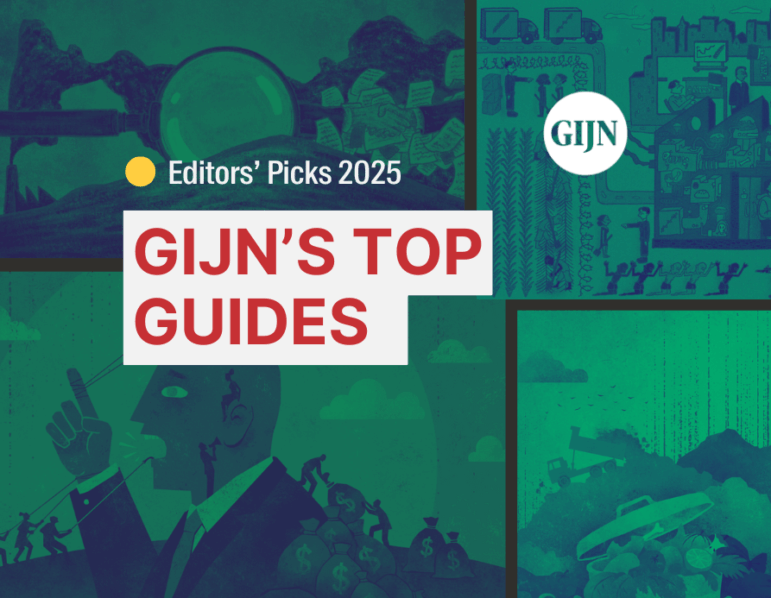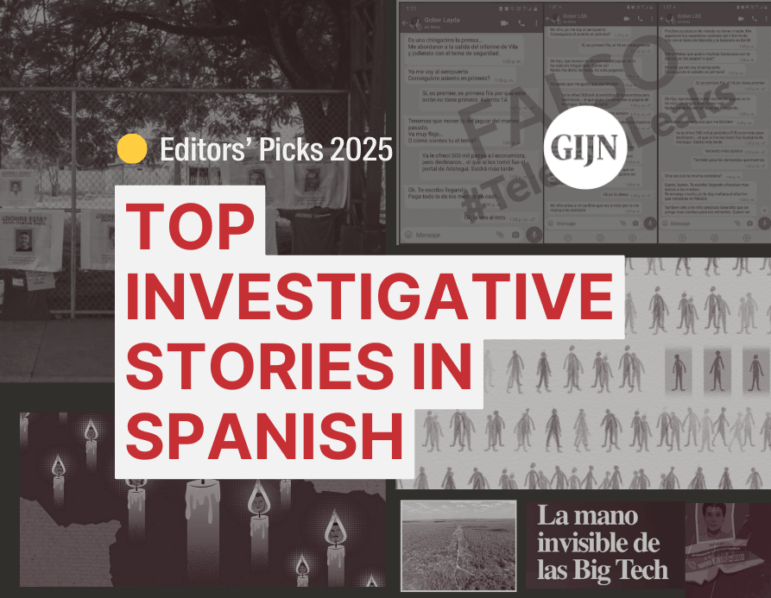

Guide Resource
Reporting Guide to Investigating Disability Issues
Chapter Guide Resource
Guide to Investigating Disability Issues: Introduction
Chapter Guide Resource
Guide to Investigating Disability Issues: Chapter 1 — Understanding Disability
Chapter Guide Resource
Guide to Investigating Disability Issues: Chapter 2 — Key Issues and Story Topics
Chapter Guide Resource
Guide to Investigating Disability Issues: Chapter 3 — Sources and Data
Chapter Guide Resource
Guide to Investigating Disability Issues: Chapter 4 — Language and Interviewing
Chapter Guide Resource
Guide to Investigating Disability Issues: Chapter 5 — Case Studies
The National Center on Disability and Journalism (NCDJ) has an extensive disability style guide for journalists that can help illuminate what language and tone to use and what to avoid. It’s available in English, Spanish, Romanian, and Italian.
Accuracy
This is an essential part of our work as journalists. Just as with any other social group or marginalized community, people in the disability community have language that is preferred, or culturally accepted — and language that is not. So how do journalists know the right thing to say?
It’s easy — ask.
“It’s much better to ask and be awkward than to be wrong and be angry, right? We have to be able to sit with our own discomfort,” explained John Loeppky, a disabled, Canada-based freelance journalist who frequently covers disability issues.
As a journalist, one should evaluate the context of the story and whether sharing someone’s disability is relevant to the story being told. Journalists should also clarify the language that disabled sources prefer regarding their disability. Listen throughout the interview for the language someone is using. It will help get a sense of how they talk about disability generally, about how they relate to their own disability in particular. All of this listening makes asking easier.
Among English speakers in Western countries, there is a common difference in wording when it comes to disability that can be a personal and important distinction: the use of “person-first” or “identity-first” language. It’s the difference between saying “person with a disability” versus “disabled person.” Other examples of this distinction could be, “nurse with a disability” or “person with cerebral palsy,” versus “disabled teacher” or “autistic adult.”
In some communities, it is more common to use identity-first, and some people prefer it because they see their disability as something they cannot separate from themselves. In other communities, it may be more common to hear person-first, because some people want their personhood to be acknowledged before their disability, or see disability as merely part of who they are as a person. Some people may not have a preference, or may not have had this question asked before. It can be helpful to give examples of the language one will use, or ask your source about the words used to describe their disability, to ensure accuracy.
“I think it is important to always consult the communities and not impose,” advised Carolina Diaz, a Peruvian freelance journalist and neurodivergent activist. “About autism, for example, non-autistic people tend to say that the correct term is ‘person with autism,’ but many prefer ‘autistic,’ plain, because autism is not a disease. Language matters. And a lot. It’s not a whim.”
Sometimes, you will encounter people, presentations, or conversations where euphemisms are used for disability. Some examples of this are “special needs,” “differently-abled,” “diversely-abled,” and “disAbility” in English. These euphemisms can vary depending on language, culture, and religion. In India, people with disabilities are sometimes referred to as ‘divyang’ which means “the one with a divine body part” in Hindi. Indian journalist Abhishek Anicca says this is similar to the Western use of “special needs.”
“What is special need, what are normative needs?” Anicca noted, pointing out that these terms don’t truly describe a specific group.
Typically, it is best to not use these terms unless they are within the title of a law, such as the Qatari government’s “Persons with Special Needs Act No. 2 of 2004,” or they are part of an organization’s name, like Diversability.
Another common phrasing you may hear are terms like “low-functioning” or “high-functioning” to describe people with disabilities, especially when writing about autism or neurodivergent communities. NCDJ explains that these terms are seen as offensive by some. Author Eric Garcia, who is an autistic journalist and senior Washington correspondent for The Independent, noted in his book that he would use the terms people self-identified with when describing them. “I’m not a fan of “high-functioning” or “low-functioning,” but I recognize it if I’m quoting a source and they say, ‘high-functioning,’ what am I going to do?,” Garcia explained. “I think that some quotes and words in between quotes, might as well be scripture; I don’t mess with them.”
Also, it is important to exert caution with using words that typically frame disability as a negative experience, such as “suffers from,” “defect,” “limitation,” “impairment,” or frames a mobility aid as limiting, such as using “wheelchair-bound.” Again, ask sources and community-run organizations for the correct language to use. Note that NCDJ recommends using neutral language when describing people with disabilities, such as writing “has,” “lives with” or “uses a (insert mobility aid).”

Sara Nović discussing writing with students at the Rocky Mountain Deaf School in Colorado, US. Image: Screenshot, Sara Nović
Finally, inappropriate language or metaphors can also make their way into investigative reporting that isn’t about disability. How many times have you heard an accountability story use the phrase “fell on deaf ears?” Some phrases in common language can be unknowingly ableist, and advance stereotypes. See, for example, this BBC story by Sara Nović on “The Harmful Ableist Language You Unknowingly Use.”
Describing People Without Disabilities
A lot of people are unsure how to describe people without disabilities. NCDJ does suggest, as with other phrasing about disability, to use neutral language, such as “non-disabled” or say someone does not have a disability. The exception NCDJ notes is that some government reports do use the term “able-bodied.”
In situations where you don’t know if an interviewee is disabled or not and it would be beneficial to the story, such as when interviewing leadership of organizations that serve people with disabilities, you may ask if the person identifies as someone with a disability or as a non-disabled person. Remember not all disabilities are apparent.
Reclaimed Language
In some countries, areas, or cultures, you may encounter the use of “reclaimed” language — that is, language that was once, or still is, used to inflict harm or hurt on a community, now being used by members of that community. “Crip” and “cripple” are two words that have been reclaimed by some disabled people, but are still seen as offensive to other disabled people.
Loeppky, who uses the term crip and cripple, says for him, it has a specific political connotation.
“I would characterize ‘crip’ as a political identity, more so than a sort of standard. Crip announces a certain kind of politics in a way that identity-first and person-first doesn’t necessarily,” Loeppky said, adding, “Good luck trying to find a crip who isn’t talking about intersectionality and disability justice and abolition, prison abolition.”

Disability activists join with other communities as part of intersectional political efforts and human rights protests. Image: Shutterstock.
According to the NCDJ, you shouldn’t use the terms “crip,” “cripple,” or other known offensive words to describe people with disabilities, unless it’s describing a movement or in a direct quote.
The Critical Disability Studies Collective at the University of Minnesota says “crip” should only be used with the permission of the community or person you are referring to, or in describing ideas like crip time and crip theory.
Loeppky said understanding what these reclaimed words mean can be helpful when you engage with the community.
Trust and Accessibility
People with disabilities haven’t always been included in coverage, or when they are, it’s as a stereotype, or it’s an inaccurate or reduced version of their life. People with disabilities have also been excluded from coverage because we’re sometimes not seen as people to consume news.
“One of the things is that we do not see people with disabilities as a news audience, and I think that is the crux of why you see such bad investigative journalism about disability,” Garcia said. “Therefore, they [journalists] need to ask themselves, what do our consumers need to know?”
To build trust, reporters have to build accountability for ourselves, and meet people where they’re at.
“A lot of disabled people have a radical mistrust of the way disability is represented in media. And they’re at war, often within themselves, I would say, between I want this message to get out and I don’t trust the message that this is coming out to,” Loeppky said. He added that a reporter asking “do you have any questions of me?” at the end of an interview can build accountability and allow your sources to feel comfortable learning more about how you’re telling their story.
Ugandan journalist Irene Abalo Otto says it’s important to physically find people with disabilities in their spaces. Some people with disabilities became disabled in war, conflict, or terrorism, such as the amputees disabled by the Lord’s Resistance Army in Northern Uganda. It’s crucial to meet them where it’s accessible and comfortable for them, even if it takes more time or work on your part.
“If you’re going to cover a story where the person lost their livelihood and they had to relocate, say, from a camp setting, or internally-displaced persons setting back to the village, the remote area [is] where you want to find them and speak to them,” Abalo Otto explained.
Interviewing Best Practices
As journalists, we’re often told face-to-face or phone conversations are best. But they aren’t always the best for everyone.
Some people prefer virtual communication or phone communication, either due to barriers accessing their community, mental health reasons, or precautions to keep from catching an infectious disease. Some people do better with preparation rather than being put on the spot, especially for individuals with anxiety, fatigue, executive dysfunction, or sensory processing. Some people need to be face-to-face, either in person or virtually, to read your lips or use an interpreter. This isn’t an exhaustive list; rather it’s to say that no one interviews the same, and we’re better off providing more options to people than less.
In other words: Ask people what they need. Be upfront about what you can offer as far as accessibility, and try to accommodate their needs as you might any other source or subject
Don’t assume what a source may need. Offer an array of different ways the interview can be conducted; by video call with captioning, phone, texting, or in-person, whichever is most accessible and comfortable to the interviewee.
When doing remote video interviews:
- Ask them which platform is more accessible to them and in simple terms explain to the person ways to achieve broadcast quality audio or video. You can ask them to record the audio on their phone separately and send it to you when you’re done. If video quality is poor due to connection issues, ask for photos.
- Texting or email can be valuable for sources who may be non-verbal or prefer written communication. If you need to voice the texts or email for broadcast, ask the interviewee if that’s okay with them.
For in-person interviews, ask the person whether they have any access needs such as:
- Wearing a mask or social distancing. Conversely, someone may need you to not wear a mask if they need to read your lips.
- Meeting at an accessible location. The source may need to meet you somewhere that is wheelchair-accessible, or not very loud or bright.
- Breaking up an interview into smaller chunks of time or offering frequent breaks. This is something you may also choose to suggest upfront if you know your source has chronic fatigue or chronic pain, for example. Not everyone can sit, or talk, or text, for long periods of time. Let them know upfront how long the interview will take.
- Needing an interpreter in case someone is Deaf or hard of hearing.
Some general tips include:
- Whenever possible, take time when doing interviews. Be patient as people speak.
- Offer to send questions ahead of time if it will help someone during the interview.
- If someone has a cognitive or intellectual disability, it may be helpful to use plain language questions. Ask smaller, simpler questions, but be cautious not to infantilize the person. Treat them with respect, just be thoughtful of the length of the questions.
Additional Resources
GIJN Guide to Investigating Health and Medicine
Tips for Reporters Seeking to Reveal the Scale of Inequality
 Emyle Watkins is a New York-based, award-winning investigative journalist. Since 2021, Emyle has led coverage of the disability community for WBFO, Buffalo’s NPR station. Emyle’s passion for covering disability comes from personal experience as a disabled and neurodivergent person. Emyle’s reporting has been published by NPR and The Pittsburgh Post-Gazette, and has appeared in breaking news reports for BBC World News.
Emyle Watkins is a New York-based, award-winning investigative journalist. Since 2021, Emyle has led coverage of the disability community for WBFO, Buffalo’s NPR station. Emyle’s passion for covering disability comes from personal experience as a disabled and neurodivergent person. Emyle’s reporting has been published by NPR and The Pittsburgh Post-Gazette, and has appeared in breaking news reports for BBC World News.

